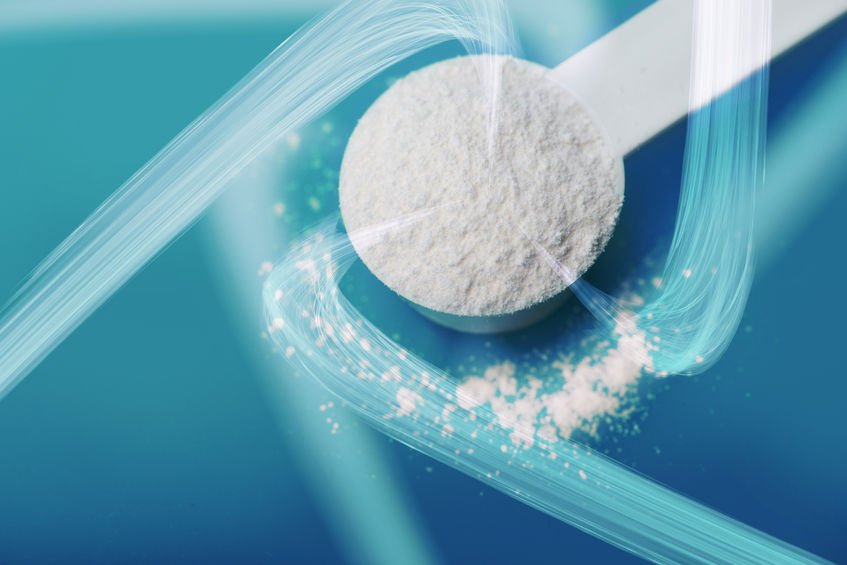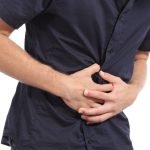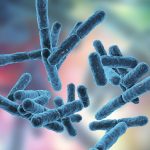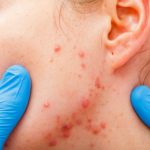Gary Weiner, ND, LAc
Naturopathic Perspective
The elemental diet (ED) has enjoyed a revival in the naturopathic community largely due to the efforts of Drs Allison Siebecker and Steven Sandberg-Lewis, who have consistently presented it as 1 of 4 treatment options for small intestinal bacterial overgrowth (SIBO).1 The recent availability of more palatable, higher quality ED products, and Dr Siebecker’s promotion of homemade elemental diets for SIBO2 have likely increased the ED’s use among physicians whose patients are often exasperated with conventional treatment of IBS that fails to account for the prevalence of SIBO in this disorder.
Using an ED to treat SIBO is a minor indication for this old dietary management approach when compared to its principal use in inducing remission of Crohn’s disease (CD) and resolving nutritional deficits in inflammatory bowel disease (IBD).
Historically, IBS has been considered a purely “functional” disorder. In a large subset of cases, however, IBS is now appreciated as an “organic,” dysbiotic phenomenon, often with SIBO at its epicenter.3 This awareness is helping to shed new light on the elemental diet.
The fact that a single dietary management strategy can influence both IBS and IBD makes sense when we visualize IBS and IBD on a continuum (with the intersection point of dysbiosis) and consider the shared features of inflammation, immune activation, altered intestinal permeability and microbiome, cytokine imbalances,4,5 and SIBO.6,7 Both IBD and IBS can also lead to significant nutritional losses, which an ED effectively corrects while simultaneously impacting misshapen microbiomes. Remarkably, the ED’s multi-factorial mechanism of action8,9 can support the induction or maintenance of remission of both IBS and IBD.
What is an Elemental Diet?
The word elemental is partially defined as something “fundamental,” “simple,” and “uncomplicated.”10 Indeed, the term “elemental diet” nearly describes the thing – a “chemically defined” medical food composed of breakdown products of protein, carbohydrates, and fats, along with essential vitamins and minerals, delivered to the patient through a nasogastric tube in a hospital (or home) setting, or as a liquid beverage, much like a meal replacement or cleansing product.
What distinguishes an ED from typical meal replacement is its defining feature: pure, free-form amino acids, devoid of the whole proteins of polymeric feeds or the small peptides of a semi-elemental diet. These amino acids are joined by a carbohydrate component consisting of monomers of glucose, dextrose, or the very weak oligosaccharide, maltodextrin. High sugar content is required to meet the energy requirements of the exclusive nutrition the ED provides in most therapeutic regimens. The fats are commonly in the form of medium-chain triglycerides, combining stability and bioavailability. Fat content is minimal in most of these products, given the role of high-fat diets in the pathogenesis of IBD.11 Finally, vitamins and minerals are included, in amounts that meet RDA requirements.
The ED’s strengths derive from its unique properties: high nutritional efficacy, largely monomeric composition, proximal digestibility (ie, “pre-digested”), low residue, hypoallergenicity, and water solubility.12 The diet is also flexible and modifiable.
Mechanisms of Action
ED studies, mostly focused on CD data, are inconclusive in describing a single or central mechanism of action that explains how the diet induces and maintains remission in IBD. The following factors have been proposed as possible mechanisms of action13-15:
- proximal absorption (early assimilation of pre-digested nutrients)
- nutritional effects (correction of malnutrition)
- low residue (resulting from proximal absorption of near monomers and the absence of fiber)
- bowel rest (another potential mechanism for the ED’s ability to induce remission in IBD)
- decreased antigenicity (due to the absence of antigenic whole proteins, small peptides, and particles)
- decreased production of biliary, gastric, and pancreatic secretions (resulting from early assimilation and low residue; such secretions can irritate an inflamed bowel; undersecretion likely helps heal inflamed mucosa)
- decreased malabsorption (possibly resulting from the ED’s ability to eradicate SIBO, which can be produced by IBD)
- alteration of the microbiota (possibly a central mechanism of action16)
- decreased intestinal permeability
- decreased proinflammatory cytokine response
A hypothesized mechanism of action for the ED in cases of IBS with SIBO is that rapid absorption and assimilation of elemental nutrients leave minimal substrate for more distal bacteria. Pimentel and colleagues, however, propose 3 additional mechanisms of action to consider for SIBO17:
- An ED-induced increase in cholecystokinin leads to gallbladder emptying; this stimulates phase III of the migrating motor complex (MMC), resulting in a reduction of small intestinal bacteria.18
- The ED stimulates jejunal secretion of immunoglobulins (eg, IgG, IgA) that helps clear overgrown organisms.19
- The ED directly reduces coliforms, enterococci, and Bacteroides.20 One study noted that the ED even eliminates duodenal (proximal) organisms,21 confounding the proximal absorption theory and raising the question of direct bacterial-inhibiting effects.
Since no research supports any one mechanism of action, it may be best to visualize a confluence of mechanisms impacting an unstable intestinal environment.
Indications
Standard indications for an elemental diet in the conventional literature are few, even though the ED is likely the most researched dietary management strategy in gastroenterology.
For primary indications, the ED is well supported to induce and maintain remission of acute CD in children and adults.22 As a first-line treatment for pediatric CD, numerous studies demonstrate comparable efficacy to steroids for inducing remission.23 Given the ED’s ability to stimulate mucosal healing and to address the growth and development issues in child and adolescent CD while also avoiding steroidal side effects, the ED might well be superior. Nonetheless, the ED is underutilized in North America compared to Europe and Japan.24 It is also underutilized in adult CD, where it is well supported not only for induction but maintenance of remission.25 Maintenance studies have focused on replacement of partial or “half” of daily calories with an ED, supplementing the other half with an unrestricted diet.26 This research demonstrates great efficacy for the “Half-ED” to lower relapse rates and arguably constitutes a maintenance strategy. Regardless of positive research on the exclusive or partial use of ED, poor compliance, usually due to taste, is often the reason stated for favoring alternative treatment methods.
While the ED is not indicated for induction or maintenance of remission of ulcerative colitis (UC), it is prominently indicated in both CD and UC for the malnutrition that can accompany either disease.27 While malnutrition is more prominent in CD than UC, given the small intestine involvement and concomitant frank nutritional deficits featured in CD, nutritional losses in UC patients can also be addressed by the ED.28 Regarding remission in IBD, CD-focused studies have suggested that elemental nutrition is less effective in inducing remission the more distal the pathology.22 This may explain why the ED is often less effective at inducing remission in UC. Given the proximal absorption of ED and the fact that UC begins distally in the rectum, with the left colon being a frequent locus of disease activity, there may be limits to the therapeutic reach of the ED’s direct effect, if it has one. At the same time, the ED may be unable to penetrate the sheer density of colonic bacteria compared to relative paucity more proximally. Refractory cases of UC may yet merit trials. Meanwhile, the ED can influence the nutritional losses common in UC, as well as treat the SIBO that often co-exists with or is caused by IBD.6,7
The ED is also indicated for the perioperative nutritional needs in GI diseases before29 and after30 bowel surgeries, effectively increasing nutrient status and rates of healing, and decreasing hospitalization time.
Finally, the diet is indicated for eosinophilic esophagitis; studies show it as a viable first-line treatment inducing remission.31
Non-Standard Indications
In 2004, Pimentel et al published a retrospective study of 93 IBS patients, in which they demonstrated the effectiveness of a 14-day ED in normalizing an abnormal LBT and improving IBS symptoms.17 Seventy-four patients (80%) had a normal LBT on day 15 of the ED. Five additional patients normalized their breath test (85%) when they continued to day 21. The therapeutic benefit from the ED in IBS cases with SIBO appears to be greater than that for both antibiotics32 and herbal therapy.33 Most SIBO-literate physicians agree that the ED, while being a costly and, at times, laborious method of eradicating SIBO, often succeeds when antimicrobials have failed, and is especially useful in cases with high gas levels, methane positivity, sensitivities to herbs or medications, and in patients refractory to other treatments or with concomitant IBD.
The ED has also been shown to resolve fistulas,34 intestinal ischemia,35 complicated pancreatitis,36,37 parenteral nutrition-induced gut atrophy,38 and intractible diarrhea in infants.39 It has displayed efficacy in pneumatosis coli40 as well as in cases of type I celiac disease that is refractory to gluten elimination.41
Outside of the GI tract, the ED has induced remission of rheumatoid arthritis42 and produced improvements in refractory atopic eczema43 and dermatitis herpetiformis.44
Too Good to Be True?
The first ED for humans was developed by W.C. Rose in the 1940s.45 Around the same time, a liquid diet evolved from Rose’s formulation that was found to resolve much of the malnutrition and inflammation in many CD patients.46,47 Significant efficacy was re-confirmed in 1990 with a 10-year retrospective study demonstrating ED-induced remission in 96 of 113 CD cases (85% of patients).22 If this sounds too good to be true, it is. Unfortunately, 22 of the 96 remitted patients relapsed within 6 months, with an 8-10% relapse rate thereafter. A 2016 review put the relapse rate at 50% within 6 months, usually noting that relapses commonly occur when patients return to a normal diet.48
The ED’s impact on normal human microbiota sheds light on a probable explanation for relapse. Elemental diets cause a marked and rapid reduction in microflora populations, which may relate to an important mechanism of action of the ED for both IBS and IBD. The diet rapidly decreases the total number of bacterial organisms as well as species diversity in stool samples,49 especially coliforms, enterococci, and members of the phyla, Bacteroides. What is striking, however, is how quickly the microbiota are restored, both in numbers and diversity, when patients return to an unrestricted diet. Studies have demonstrated that “the intestinal microbiome can rapidly respond to short-term dietary interventions…but reverts to its prior composition once the interventions cease.” Conversely, “[l]ong-term dietary patterns strongly influence the intestinal microbiome” producing more stability.50 While naturopathic physicians may find value in using the ED like a “nutritional steroid” in acute cases, the research suggests that we can‘t count on long-term change from short-term EDs.
The plot thickens when real food enters the picture, and we can dish up a healthier portion of tolle causam by following the ED with a whole-food diet consistent with naturopathic principles – a pairing that begins to have traction for difficult cases of IBD and IBS.
Happy Marriage: Elemental & Whole-Food Diet
When elemental diets are coupled with therapeutic whole-food diets, relapse rates improve (as they do with the use of partial or half-EDs). In an uncontrolled IBD study, an individualized exclusion diet was examined that allowed 51 of 77 patients to remain well on diet alone for periods of up to 51 months, with an average relapse rate of less than 10%.51 And in a large multi-center, controlled trial, a 2-year probability of relapse was lower in a group treated with with EDs followed by excluded foods (commonly dairy products, cereals, and yeasts).52
In IBS, where diet has clearly been identified as an important etiological factor, the response rate to elimination diets ranges from 15-71% (with the highest response rates in cases of diarrhea-predominant IBS).53
SIBO-literate physicians treating IBS generally agree that dietary therapy is required after SIBO is eradicated, whether by pharmaceutical or herbal antibiotics, or by an ED. Clearly, it is just as important to follow an ED used to induce remission in IBS as it is in IBD, but there is no general agreement on precisely what dietary therapy is needed in either condition.
I strongly urge initiation of individualized diets incorporating elements from the Specific Carbohydrate Diet (SCD) and the Low-FODMAPS Diet (LFD). These evidence-based therapeutic templates have been successfully embraced by many physicians and patients, and have small studies supporting them in both IBD54 and IBS.55 Additionally, a Semi-Vegetarian Diet (SVD) has been studied and shown to be “highly effective in preventing relapse of CD.”56 It is beyond the scope of this article to address the particulars of manipulating these therapeutic diets in IBS and IBD, as each requires study to appropriately construct regimens to follow an exclusive ED or to accompany a partial ED.
It is important to grasp that an exclusive ED is a short-term modifier of a dysbiotic pattern that requires a longer-term, whole-food dietary strategy to extend the remission of IBD or IBS (and probably other conditions), once achieved.
In Part 2 of this article, I will provide an outline for prescribing elemental diets in 6 steps, review common problems encountered with potential solutions, and present several representative cases including successful implementation of an elemental diet.
References:
- Sandberg-Lewis S, Siebekcer A. Small Intestine Bacterial Overgrowth: Common But Overlooked Cause of IBS. NDNR. Jan 2013;9(1).
- Siebecker A. Homemade Elemental Diet: Low Carb / Higher Fat Option. Available at: http://www.siboinfo.com/uploads/5/4/8/4/5484269/homemade_elemental_diet_options.pdf. Accessed October 14, 2017.
- Sandberg-Lewis S, Siebecker A. SIBO: Dysbiosis Has A New Name. February/March 2015. Townsend Letter: The Examiner of Alternative Medicine. Available at: www.townsendletter.com/FebMarch2015/sibo0215.html. Accessed October 15, 2017.
- Bradesi S, McRoberts JA, Anton PA, Mayer EA. Inflammatory bowel disease and irritable bowel syndrome: separate or unified? Curr Opin Gastroenterol. 2003;19(4):336-342.
- Bercik P, Verdu EF, Collins SM. Is irritable bowel syndrome a low-grade inflammatory bowel disease? Gastroenterol Clin North Am. 2005;34(2):235-245, vi-vii.
- Klaus J, Spaniol U, Adler G, et al. Small intestinal bacterial overgrowth mimicking acute flare as a pitfall in patients with Crohn’s Disease. BMC Gastroenterol. 2009;9:61.
- Rana SV, Sharma S, Kaur J, et al. Relationship of cytokines, oxidative stress and GI motility with bacterial overgrowth in ulcerative colitis patients. J Crohns Colitis. 2014;8(8):859-865.
- Goh J, O’morain CA. Review article: nutrition and adult inflammatory bowel disease. Aliment Pharmacol Ther. 2003;17(3):307-320.
- Maudgal DP, Ang LT, Maxwell JD. Subclinical protein malnutrition in irritable bowel syndrome: assessment by retinol-binding protein (RBP) and thyroxine-binding pre-albumin (TBPA). Hum Nutr Clin Nutr. 1983;37(1):37-41.
- Merriam-Webster Web site: https://www.merriam-webster.com/dictionary/elemental. Accessed October 15, 2017.
- Hou JK, Abraham B, El-Serag H. Dietary intake and risk of developing inflammatory bowel disease: a systematic review of the literature. Am J Gastroenterol. 2011;106(4):563-573.
- Russel RI. Elemental diets. Gut. 1975;16(1):68-79.
- Tan X, Mao J, Tang H, Wang Y. Mechanisms underlying clinical efficacy of enteral nutrition in inflammatory bowel disease. Int J Clin Exp Med. 2017;10(2):2026-2035.
- Wędrychowicz A, Zając A, Tomasik P. Advances in nutritional therapy in inflammatory bowel diseases. World J Gastroenterol. 2016;22(3):1045-1066.
- Triantafillidis JK, Vagianos C, Papalois AE. The role of enteral nutrition in patients with inflammatory bowel disease: current aspects. Biomed Res Int. 2015;2015:197167.
- Kajiura T, Takeda T, Sakata S, et al. Change of intestinal microbiota with elemental diet and its impact on therapeutic effects in a murine model of chronic colitis. Dig Dis Sci. 2009;54(9):1892-1900.
- Pimentel M, Constantino T, Kong Y, et al. A 14-day elemental diet is highly effective in normalizing the lactulose breath test. Dig Dis Sci. 2004;49(1):73-77.
- Hopman WP, de Jong AJ, Rosenbusch G, et al. Elemental diet stimulates gallbladder contraction and secretion of cholecystokinin and pancreatic polypeptide in man. Dig Dis Sci. 1987;32(1):45-49.
- Colombel JF, Vaerman JP, Hällgren R, et al. Effect of intrajejunal elemental diet perfusion on jejunal secretion of immunoglobulins, albumin and hyaluronan in man. Gut. 1992;33(1):44-47.
- Winitz M, Adams RF, Seedman DA, et al. Studies in metabolic nutrition employing chemically defined diets. Am J Clin Nutr. 1970;23(5):546-549.
- Axelsson CK, Justesen T. Studies of the duodenal and fecal flora in gastrointestinal disorders during treatment with an elemental diet. Gastroenterology. 1977;72(3):397-401.
- Teahon K, Bjarnason I, Pearson M, et al. Ten years’ experience with an elemental diet in the management of Crohn’s disease. Gut. 1990;31(10):1133-1137.
- Heuschkel RB, Menache CC, Megerian JT, Baird AE. Enteral nutrition and corticosteroids in the treatment of acute Crohn’s disease in children. J Pediatr Gastroenterol Nutr. 2000;31(1):8-15.
- Kansal S, Wagner J, Kirkwood CD, Catto-Smith AG. Enteral nutrition in Crohn’s disease: an underused therapy. Gastroenterol Res Pract. 2013;2013:482108.
- Smith PA. Nutritional therapy for active Crohn’s disease. World J Gastroenterol. 2008;14(27):4420-4423.
- Takagi S, Utsunomiya K, Kuriyama S, et al. Effectiveness of an ‘half elemental diet’ as maintenance therapy for Crohn’s disease: A randomized-controlled trial. Aliment Pharmacol Ther. 2006;24(9):1333-1340.
- O’Sullivan M, O’Morain C. Nutrition in inflammatory bowel disease. Best Pract Res Clin Gastroenterol. 2006;20(3):561-573.
- Sitrin MD. Nutrition support in inflammatory bowel disease. Nutr Clin Pract. 1992;7(2):53-60.
- Blair GK, Yaman M, Wesson DE. Preoperative home elemental enteral nutrition in complicated Crohn’s disease. J Pediatr Surg. 1986;21(9):769-771.
- Sagar S, Harland P, Shields R. Early postoperative feeding with elemental diet. Br Med J. 1979;1(6159):293-295.
- Peterson KA, Byrne KR, Vinson LA, et al. Elemental diet induces histologic response in adult eosinophilic esophagitis. Am J Gastroenterol. 2013;108(5):759-766.
- Rezaie A, Pimentel M, Rao SS. How to Test and Treat Small Intestinal Bacterial Overgrowth: An Evidence-Based Approach. Curr Gastroenterol Rep. 2016;18(2):8.
- Chedid V, Dhalla S, Clarke JO, et al. Herbal therapy is equivalent to rifaximin for the treatment of small intestinal bacterial overgrowth. Glob Adv Health Med. 2014;3(3):16-24.
- Bury KD, Stephens RV, Randall HT. Use of a chemically defined, liquid, elemental diet for nutritional management of fistulas of the alimentary tract. Am J Surg. 1971;121(2):174-183.
- Bounous G. Elemental diets in the prophylaxis and therapy for intestinal lesions: an update. Surgery. 1989;105(5):571-575.
- Voitk A, Brown RA, Echave V, et al. Use of an elemental diet in the treatment of complicated pancreatitis. Am J Surg. 1973;125(2):223-227.
- Ikeura T, Takaoka M, Uchida K, et al. Beneficial Effect of Low-Fat Elemental Diet Therapy on Pain in Chronic Pancreatitis. Int J Chronic Dis. 2014;2014:862091.
- Mukau L, Talamini MA, Sitzmann JV. Elemental diets may accelerate recovery from total parenteral nutrition-induced gut atrophy. JPEN J Parenter Enteral Nutr. 1994;18(1):75-78.
- Sherman J, Hamly C, Khachadurian A. Use of an oral elemental diet in infants with severe intractable diarrhea. J Pediatr. 1975;86(4):518-523.
- Johnston BT, McFarland RJ. Elemental diet in the treatment of pneumatosis coli. Scand J Gastroenterol. 1995 Dec;30(12):1224-1227.
- Olaussen RW, Løvik A, Tollefsen S, et al. Effect of elemental diet on mucosal immunopathology and clinical symptoms in type 1 refractory celiac disease. Clin Gastroenterol Hepatol. 2005;3(9):875-885.
- Darlington LG. Dietary therapy for rheumatoid arthritis. Clin Exp Rheumatol. 1994;12(3):235-239.
- Devlin J, David TJ, Stanton RH. Elemental diet for refractory atopic eczema. Arch Dis Child. 1991;66(1):93-99.
- Kadunce DP, McMurry MP, Avots-Avotins A, et al. The effect of an elemental diet with and without gluten on disease activity in dermatitis herpetiformis. J Invest Dermatol. 1991;97(2):175-182.
- Rose WC. Amino acid requirements of man. Fed Proc. 1949;8:546-552.
- Voitk AJ, Echave V, Feller JH, et al. Experience with elemental diet in the treatment of inflammatory bowel disease. Is this primary therapy? Arch Surg. 1973;107(2):329-333.
- O’Morain C, Segal AW, Levi AJ. Elemental diets in treatment of acute Crohn’s disease. Br Med J. 1980;281(6249):1173-1175.
- Richman E, Rhodes JM. Review article: evidence-based dietary advice for patients with inflammatory bowel disease. Aliment Pharmacol Ther. 2013;38:1156-1171
- Winitz M, Seedman DA, Graff J. Studies in metabolic nutrition employing chemically defined diets. I. Extended feeding of normal human adult males. Am J Clin Nutr. 1970;23(5):525-545.
- Shah R, Kellermayer R. Microbiome associations of therapeutic enteral nutrition. Nutrients. 2014;6(11):5298-5311.
- Jones VA, Dickinson RJ, Workman E, et al. Crohn’s disease: maintenance of remission by diet. Lancet. 1985;2(8448):177-180.
- Riordan AM, Hunter JO, Cowan RE, et al. Treatment of active Crohn’s disease by exclusion diet: East Anglian multicentre controlled trial. Lancet. 1993;342(8880):1131-1134.
- Niec AM, Frankum B, Talley NJ. Are adverse food reactions linked to irritable bowel syndrome? Am J Gastroenterol. 1998;93(11):2184-2190.
- Suskind DL, Cohen SA, Brittnacher MJ, et al. Clinical and Fecal Microbial Changes With Diet Therapy in Active Inflammatory Bowel Disease. J Clin Gastroenterol. 2016 Dec 27. doi: 10.1097/MCG.0000000000000772. [Epub ahead of print]
- Altobelli E, Del Negro V, Angeletti PM, Latella G. Low-FODMAP Diet Improves Irritable Bowel Syndrome Symptoms: A Meta-Analysis. Nutrients. 2017 Aug 26;9(9). pii: E940.
- Chiba M, Abe T, Tsuda H, et al. Lifestyle-related disease in Crohn’s disease: relapse prevention by a semi-vegetarian diet. World J Gastroenterol. 2010;16(20):2484-2495.
 Gary Weiner, ND, LAc, practices at Pearl Natural Health in Portland, OR, where he treats patients with GI disorders and has developed an alternative and complementary care program for inflammatory bowel disease. He graduated from NCNM in 1997 and completed a 1-year residency in family medicine. He served as a clinical supervisor at NUNM through 2016, and offers an NUNM-certified residency program sponsored by the National Education and Researched Consortium (NERC). He is a member of the GastroANP, and has served on the medical advisory board of the Northwest Crohn’s and Colitis Foundation of America. Dr Weiner lives in Portland with his wife and daughter.
Gary Weiner, ND, LAc, practices at Pearl Natural Health in Portland, OR, where he treats patients with GI disorders and has developed an alternative and complementary care program for inflammatory bowel disease. He graduated from NCNM in 1997 and completed a 1-year residency in family medicine. He served as a clinical supervisor at NUNM through 2016, and offers an NUNM-certified residency program sponsored by the National Education and Researched Consortium (NERC). He is a member of the GastroANP, and has served on the medical advisory board of the Northwest Crohn’s and Colitis Foundation of America. Dr Weiner lives in Portland with his wife and daughter.





